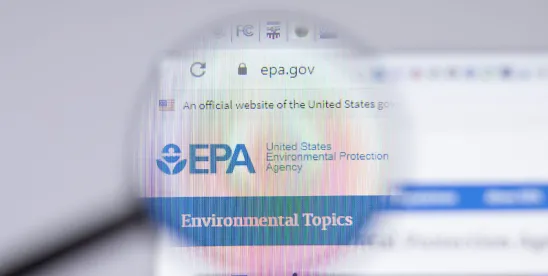During the June 26, 2024, “TSCA Reform — Eight Years Later” conference, presented by Bergeson & Campbell, P.C. (B&C®), the Environmental Law Institute, (ELI), and the George Washington University Milken Institute School of Public Health, Michal Ilana Freedhoff, Ph.D., Assistant Administrator, Office of Chemical Safety and Pollution Prevention, U.S. Environmental Protection Agency (EPA) provided the keynote address. During her remarks, Freedhoff announced four new initiatives in EPA’s review of new chemicals under the Toxic Substances Control Act (TSCA). As later announced by EPA, these initiatives are:
- Engineering checklist: In May 2024, EPA began implementing an internal engineering checklist to review systematically new chemical submissions and identify potential data gaps at the beginning of the review process. According to EPA, the engineering checklist addresses some of the most common missing information that EPA has identified in submissions, including lack of clarity about the intended end use or process (i.e., how many days per year it is expected to be used), the physical form of the chemical (i.e., if it is a spray that could create mist), and the life cycle of the chemical (i.e., how it is expected to be disposed of). If EPA identifies any missing information, EPA can proactively notify the submitter of the issue and allow them to provide it before the Agency starts its risk assessment.
- Worker protections: EPA notes that when it reviews a new chemical submission, one potential outcome is issuing an order under TSCA Section 5(e) that allows the chemical to be manufactured only under the terms of the order. According to EPA, most TSCA Section 5(e) orders are consent orders that are negotiated between EPA and the notice submitter and use standard “boilerplate” text. In June 2024, EPA updated the boilerplate language to strengthen worker protections and provide further clarity to the text. EPA states that the update requires that workers, including contractors, and their representatives have ready access to information in orders. It also restores and strengthens prior requirements in orders issued before 2020 for hazard communication, labeling, safety data sheets (SDS), and training. In addition, EPA made a number of housekeeping revisions to the boilerplate that include updating example terms, restoring text, removing extraneous text, adding definitions, and editing for clarity and to improve formatting. EPA encourages stakeholders to review the new boilerplate language and submit input to the Agency.
- Updated statistics for new chemical review timelines: On June 26, 2024, EPA will begin including completed “rework” risk assessments when reporting monthly statistics on new chemical reviews. Rework cases occur when supplemental work is required after the initial risk assessment has been completed, including the evaluation of new information not provided with the original submission and development of new assessment reports or memoranda as a result of the submitter later providing new information or questions. EPA has updated its Statistics for the New Chemicals Program under TSCA web page to include a category listing all completed rework risk assessments since the beginning of 2024. From January to May 2024, EPA completed 218 risk assessments, 26 of which were rework cases representing approximately 12 percent of all risk assessments completed during that period. EPA states that this statistic, along with all the other statistics on the web page, will continue to be updated on a monthly basis.
- Reference Library: On June 26, 2024, EPA launched the New Chemicals Division Reference Library, an index of EPA documents related to the work of the New Chemicals Division. According to EPA, this resource includes guidance documents, compliance advisories, templates, manuals, and other materials useful to a variety of stakeholders. EPA notes that these materials were previously available on various web pages across the EPA website, which could have made them challenging to locate. Because EPA is centralizing them in one location, the public will be able to find documents more easily, as well as identify ones of which they may not have been aware. The Reference Library has a search function or can be organized by topic, subtopic, title, publication date, or source. It currently contains over 90 entries, and EPA will update it as it develops new materials.
A memorandum recapping the June 26, 2024, conference will be forthcoming.




 />i
/>i

